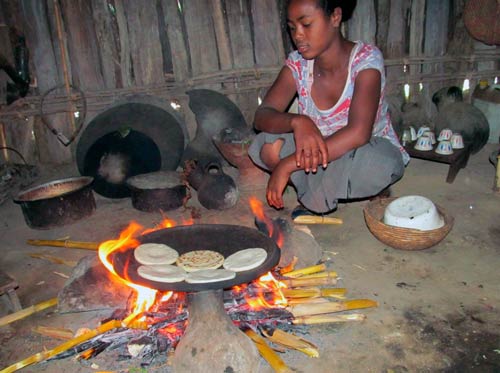Across Ethiopia, farmers bring a different dimension to the age-old tradition of naming children in symbolic and meaningful ways, by assigning a human name to Quality Protein Maize (QPM) that reflects its importance. In some parts of Oromia region, QPM is known as Gabissa, meaning builder, because it is believed to build bodies and make people strong. In the Amhara region, it is known as ‘Almi Bekolo’ or ‘Gembi bekolo, both names meaning building the body. QPM has gained its fame across Ethiopia, as an affordable and viable option to alleviate protein malnutrition and reduce animal feed costs thanks to the CIMMYT’s Nutritious Maize for Ethiopia (NuME) project and many national partners.
QPM looks and tastes the same as normal maize but contains up to twice as much of the essential amino acids, lysine and tryptophan. Eating QPM is beneficial for children who survive on a maize-dominated diet. According to a study in Food Policy children who consume QPM benefit from 12% increased weight and 9% increased height.
Commitment to the agriculture sector
Around 10% of the Ethiopian national budget has been allocated to agriculture, according to the Ministry of Agriculture. As a result, the agriculture sector, which accounts for roughly 43 per cent of overall GDP, has been registering steady progress over the past two decades, landing the country on a path to food security. A number of other measures have contributed to this success, such as the availability of fertilizer, improved seed and agricultural extension services, which have currently reached more than 8 million farmers.
A focus on nutrition security
The Ethiopian government is currently stepping up nutrition interventions targeting women and children, with aims for a 3% annual reduction in the number of stunted and underweight children, according to the Government’s five-year Growth and Transformation Plan. However, the fact that 2 out of every 5 children in Ethiopia are stunted and 28% of all child mortality in Ethiopia is associated with undernutrition or malnutrition, is a clear indication that a lot still needs to be done.

To tackle the challenge of malnutrition in Ethiopia, CIMMYT takes a holistic approach to QPM and conducts a range of activities including: improved crop management practices, post-harvest handling and processing, increasing the participation of women, nutrition campaigns, as well as strengthening institutional capacity. Since 2012, 143,747 farmers, extension workers and development officials (of which 28% are women) have attended 993 field demonstrations and 240 field days on QPM utilization.
Funded by the Canadian Department of Foreign Affairs, Trade and Development, CIMMYT is working with the Ethiopian Institute of Agricultural Research, the Ministry of Agriculture and other partners to improve food and nutritional security in Ethiopian farming communities through the promotion and expansion of QPM backed by improved agronomic practices that increase productivity. NuME is building on the success of previous CIMMYT projects to bring QPM to rural maize producers in the Ethiopian maize belt and beyond where consumers, especially young children and women, are at risk of lysine deficiency.
 Nutrition, health and food security
Nutrition, health and food security